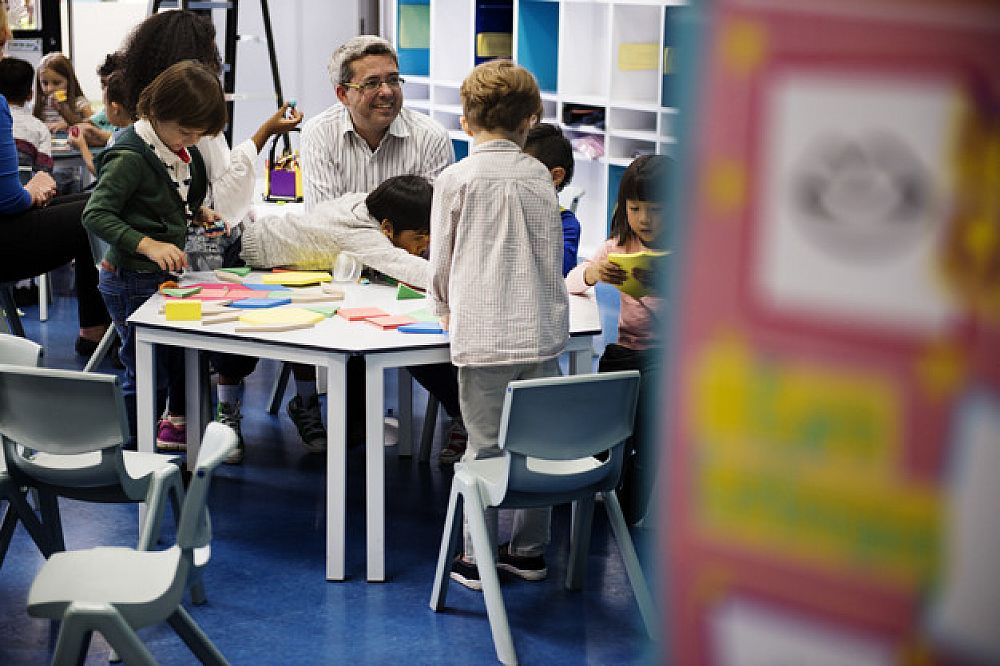Rapport as a Skill: How to Get Along With ESL Learners

Teaching-and-learning is always interactive and intercommunicate. When sitting in a classroom, a student has been part of relationship-building, with teachers as well as with other students. How to establish rapport is therefore important. In this essay, I will focus on how teachers to establish rapport with students step by step in a classroom against the backdrop of my understanding and teaching experiences.
Table of Contents
Work on Building Relationships
Do you want to teach English abroad? Take a TEFL course!
This post was written by our TEFL certification graduate Ruixia B. Please note that this blog post might not necessarily represent the beliefs or opinions of ITTT.
Get Acquainted
First of all, it is to know your students. Being a teacher, it is necessary or even a must to remember each student's name and to have a clear idea of their age, gender, cultural background, and language level, in my case, their English-level of learning English as a foreign language of course, if you have a new class to begin in a new academic term. This should be done as early as a teacher gets the students' list.

Also Read: Getting Student Placement Right - The Best Desk Arrangements for EFL Students
Work on Building Relationships
Secondly, when the course begins, both the teacher and the students face each other with all kinds of 'newness'. I believe that the teacher needs to actively build up a comfortable relationship with each student, to help them to know much about you, and to assist them to know each other with various classroom activities. It is also much better to have a language level test if required. But the teacher needs to emphasize there is no pressure at all to have this test, which is only a way to adjust the teacher's course design and plan to satisfy teaching aims properly. I think, from the very beginning, the teacher needs to be open, patient, friendly, helpful and fair.
Use of Resources
After stepping over this first stage of getting to know each other, a teacher then begins to establish a much more stable, sustainable, long-term rapport with the students. The core of this process, for me, lies mostly in a teacher's teaching quality. The students sitting in the classroom is to learn. The teacher needs to attract their attention, to provide a high-quality learning experience, and to reach teaching-and-learning aims successfully. From teaching materials selection to the usage of teaching techniques and skills, from classroom activities to feedback-giving, a teacher must make the students feel they are engaged, activated and produced. Only when the students feel it is quite interesting and productive by learning with you, will then your rapport as a teacher with them be established. That's why a teacher needs to improve himself/herself from time to time and to think about course design and plan all the time.

Also Read: How Teaching English In Brazil Inspired Me To Take My TEFL and Pursue A Teaching Career
After Class Communication
Meanwhile, do leave some of your office hours for your students after class, which will make you be available if they have any questions to ask, or want to talk about their expectations, to seek for support and encouragement, to enhance their learning motivations or even to ask for kind of help on personal issues out of a trust you have given to each other. This after-class, usually one-to-one talking, will make you aware of each student's specific requirements.
Feedback
The fifth point I want to emphasize is that a teacher needs to offer his/her feedback to the students clearly and concisely. No matter it is an onsite oral presentation, a result of listening practice, or a reading comprehension, a writing practice, the students are always looking forward to getting the teacher's feedback in time. It is better to offer those feedbacks with correction as well as with praise and encouragement. Also, I'd like to have in-class tests after a stage of teaching-and-learning. I believe it is a good way to keep the students on track and to get an overview evaluation after a period of studying as well.
Also Read: How long does a TEFL course take?
Do you want to teach English abroad? Take a TEFL course!
Last but not least, from the teacher's side, whether or you want to establish rapport with your students depends on how much you care about being a teacher and care about the studies of students. If you are a person with a strong sense of responsibility and devotion, you take each course seriously, you are already on the way of being a teacher being loved or to be loved. So love teaching, love being a teacher is the foundation of all.
Apply now & get certified to teach english abroad!
Speak with an ITTT advisor today to put together your personal plan for teaching English abroad.
Send us an email or call us toll-free at 1-800-490-0531 to speak with an ITTT advisor today.
Related Articles:
- TEFL Breakdown - What Subjects Will Your TEFL Course Cover?
- 5 Reasons Why Teaching English Abroad Enhances Your Career Prospects
- Top 5 Tips: How to Learn a New Language When Teaching English Abroad
- 4 Top Tips for Getting Your TEFL Certificate on the Road
- The How-To Guide for Americans to Teach English in Europe
- 5 Great Places to Teach English Abroad Without a Degree




